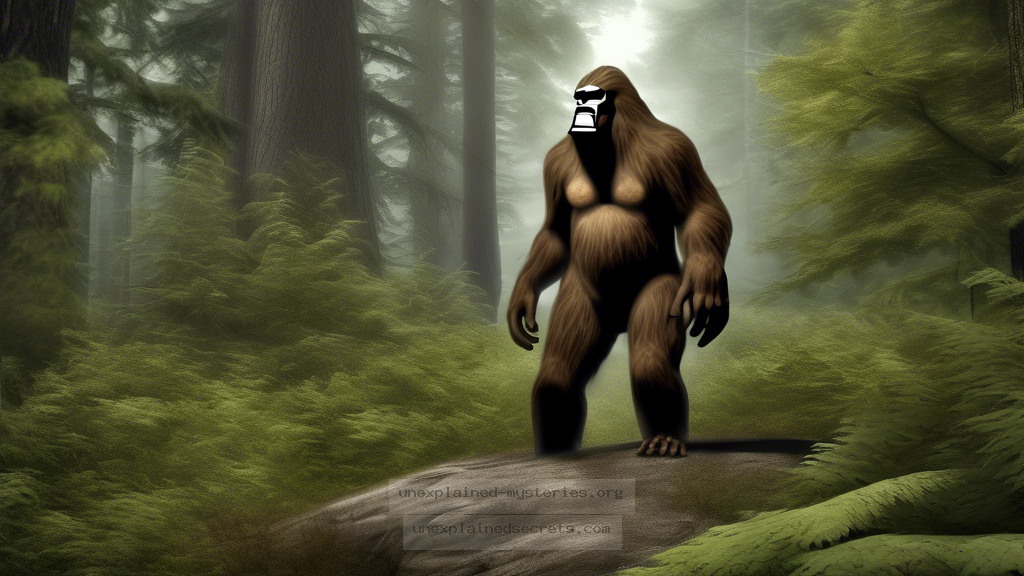What Evidence Supports the Existence of Bigfoot in North America?
What Evidence Supports the Existence of Bigfoot in North America?
The question of Bigfoot’s existence fascinates many, sparking countless debates among cryptozoologists, skeptics, and enthusiasts alike. With reports dating back centuries and a wealth of anecdotal evidence, the allure of this giant ape-like creature seems to grow with each passing year. But what concrete evidence—if any—supports the claim that Bigfoot roams the forests of North America? This blog post will explore the various types of evidence, historical context, and ongoing debates surrounding this elusive creature.
Historical Context of Bigfoot Sightings
The legend of Bigfoot, or Sasquatch, has its roots deeply embedded in the folklore of Native American cultures, where stories of large, hairy beings have been passed down through generations. Tribes such as the Salish and the Sioux have long spoken of a creature they refer to as “Sasquatch” or “Wendigo,” often attributing to it both fear and reverence. The first recorded sighting in Western history can be traced back to 1811 when explorer David Thompson noted large footprints near the Columbia River.
Fast forward to the 20th century, when the modern Bigfoot phenomenon took off after a series of significant sightings, including the famous Patterson-Gimlin film of 1967, which purportedly shows a female Bigfoot walking through a clearing in Northern California. This film has become legendary in cryptozoological circles, serving as both a centerpiece for believers and a target for skeptics.
Types of Evidence: Footprints and Hair Samples
One of the most compelling forms of evidence for Bigfoot’s existence is the numerous footprints reported by eyewitnesses. These footprints are often described as being over 15 inches long and resembling those of a human but much larger. Notably, the 1976 discovery of a set of footprints in Bluff Creek, California, reignited interest in Bigfoot, leading to extensive analyses by researchers.
In addition to footprints, hair samples claimed to be from Bigfoot have been a focal point of investigation. In 2012, a group of scientists conducted DNA testing on hair samples allegedly found in the Pacific Northwest. The study concluded that the hair did not belong to any known species, leading to speculation about the existence of a previously unknown primate. However, critics argue that the samples could easily be from known animals, such as bears or elk.
Audio Evidence: The Sounds of the Forest
Audio recordings have also contributed to the Bigfoot lore. Many enthusiasts report hearing strange sounds in the wilderness, which they attribute to Bigfoot. One of the most famous recordings is the “Sierra Sounds,” captured in the 1970s by Ron Morehead and his team during their expeditions in the Sierra Nevada Mountains. The recordings feature a series of howls, growls, and other vocalizations that some experts claim are unlike any known animal sounds.
While some analysts have attempted to identify these sounds, others argue that they remain unexplainable. The debate over these audio evidence collections often hinges on the interpretation of the sounds themselves, with skeptics suggesting they could easily be attributed to known wildlife.
Photographic and Video Evidence: A Double-Edged Sword
Visual evidence is perhaps the most controversial aspect of the Bigfoot phenomenon. The Patterson-Gimlin film, shot in 1967, remains the gold standard for many believers. The footage shows a creature walking through a clearing, and despite extensive analysis, no one has definitively proven it to be a hoax. However, critics argue that the film could have been staged or that the creature was a person in a costume.
More recently, various other videos have surfaced, including the infamous “Minnesota Iceman” and various alleged Bigfoot sightings captured on smartphones. While these videos often generate excitement within the community, they are frequently dismissed as low-quality, easily misinterpreted, or outright hoaxes. The quality of evidence in this category is therefore often called into question.
Scientific Perspectives: Acceptance and Skepticism
Scientific inquiry into the existence of Bigfoot has been met with a mix of curiosity and skepticism. Most anthropologists and biologists consider the existence of such a large, undiscovered primate in North America highly improbable. The lack of physical evidence, such as bones or carcasses, raises significant questions about how a creature of that size could exist without being detected.
Some scientists argue that the vast, remote wilderness areas of North America could potentially house undiscovered species. However, the prevailing view is that the evidence presented thus far does not meet rigorous scientific standards. For example, Dr. Jeff Meldrum, a professor of anatomy and anthropology, has been one of the few scientists to advocate for the potential existence of Bigfoot, citing foot morphology and other data as worthy of further research.
Common Misconceptions and Clarifications
As with any mystery, misconceptions abound regarding Bigfoot. One common belief is that all sightings are hoaxes or misidentifications. While some certainly are, numerous credible eyewitness accounts emerge, often from individuals with no prior interest in Bigfoot. Additionally, the idea that Bigfoot is simply a myth or a relic of past folklore fails to consider the cultural significance and continuous reports from various communities.
Another misconception is that Bigfoot is a solitary creature. While many reports describe individuals, there are also accounts of multiple creatures sighted together, leading some researchers to theorize that they might form small family groups or communities. This aspect complicates the narrative and raises questions about their potential behavior and habitat.
Best Practices for Investigating Bigfoot
For those interested in pursuing the investigation of Bigfoot, it is crucial to employ best practices to ensure credible results. First and foremost, thorough field research is essential. This includes recording detailed notes of sightings, collecting audio and visual evidence using high-quality equipment, and cataloging data systematically.
Team collaboration is also vital. Engaging with local communities and experienced researchers can provide valuable insights and help corroborate findings. It is also important to maintain a healthy skepticism; not everything that looks like evidence will hold up under scrutiny. Critical thinking should guide the investigation, ensuring that claims are backed by reliable data.
Future Developments: Ongoing Research and Exploration
The ongoing search for Bigfoot continues to capture the imagination of both researchers and enthusiasts. New technologies, such as advanced DNA analysis and high-resolution imaging techniques, hold the potential to provide fresh insights into the mystery. For instance, genetic studies of potential Bigfoot hair samples may yield more information about the creature’s origins and lineage.
Additionally, the rise of social media and digital platforms allows for broader sharing of experiences and evidence, creating a more connected community of investigators. As more people engage in field research and share findings, the possibility of discovering new evidence remains alive. While skepticism is healthy, ongoing exploration is essential for those who seek to understand this enduring mystery.
Conclusion: The Enigma of Bigfoot Persists
In the quest to answer the question of Bigfoot’s existence, we find ourselves confronted with a tapestry of evidence, anecdotal accounts, and scientific skepticism. While definitive proof remains elusive, the cultural significance of Bigfoot and the passion it ignites in people continue to inspire exploration and inquiry. The combination of historical context, various types of evidence, and ongoing research will likely keep the Bigfoot discussion alive for years to come. Whether or not Bigfoot exists may ultimately remain a mystery, but the search for answers is a journey that captivates the human imagination.
Other Articles
Recent Posts
- What Happened to Flight MH370? The Conspiracy Theories That Still Haunt Us
- What Secrets Lurk Within the Walls of the Infamous Trans-Allegheny Lunatic Asylum?
- What Evidence Supports the Existence of Bigfoot in the Pacific Northwest?
- What Happened to the Indus Valley Civilization? Unraveling the Mysteries of Ancient Urban Life
- Can Telepathy Be Scientifically Proven Through Laboratory Evidence?







